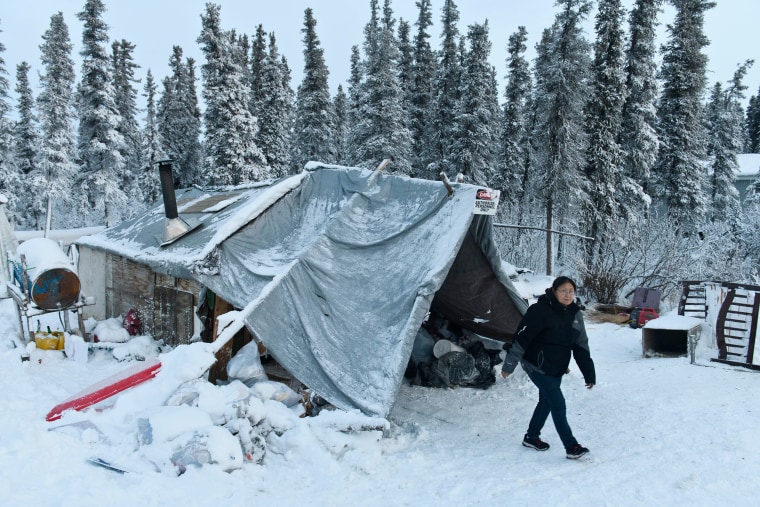Allan Lamprey had been homeless for almost all his adult life. Struggling with substance and alcohol use, he moved around the country, from his home state of Virginia, to Maryland and then out to California. Eventually, he made his way up to Alaska in 2008.
Lamprey found himself in Fairbanks, the hub city of Interior Alaska with a population of just a little over 30,000, where the average January low is minus 19. Winter hit him hard.
“It was something I had never experienced before,” Lamprey, 60, said. “It’s hard to live when it’s 40 below.”
A worker from a 12-step program found Lamprey in the woods with a 12 pack of beer in his hand, and asked him if he wanted help. Eventually, he got sober and linked up with the Fairbanks Rescue Mission, a local homeless organization, to get shelter and work.
Lamprey started as a cook, became a shelter manager, and now directs the recycling center the mission runs to help homeless people get job experience.
“If it wasn’t for the mission, I’d be dead,” he said.
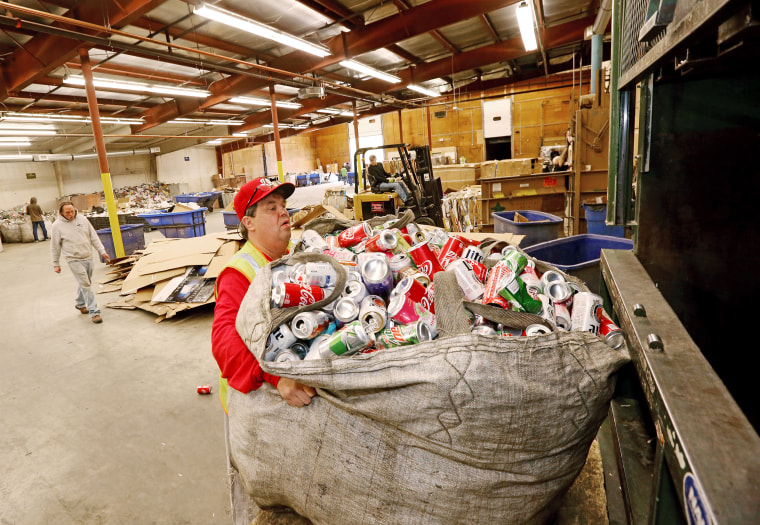
But stories of rehabilitation and success, like Lamprey’s, might soon become increasingly rare in Alaska, advocates for the homeless warn.
In a vast state that dwarfs California in size and where freezing to death is a very real threat, Alaska faces unique challenges in tackling homelessness. In its few cities, more commonplace homelessness problems are exacerbated by the weather and a lack of statewide infrastructure. But with sweeping budget cuts made this summer across the board by Republican Gov. Mike Dunleavy, resources for homeless services have been stretched even thinner. This summer, shelters in Anchorage had to close during the day, putting mothers out on the streets with their children at 8 a.m., with operators having to make the tough decision of who could stay and who had to leave.
In rural areas, building homes is so expensive that the only way to stave off homelessness is by living in overcrowded houses. In the most remote parts of the state, 15 people sleeping in a 700-square-foot home is not uncommon, often leading to health issues.
Advocates and nonprofits have spent years studying and trying to tackle what they call Alaska’s two-pronged homelessness crisis. Put simply, they need more money. But as the state cuts back, they worry about how they’ll continue to hang on to the services they offer and keep the people they serve warm.
‘A war with not enough weapons’
As the country began to crawl out of the 2008 recession, Alaska took an economic hit when oil prices plummeted in 2014. Amid a mounting deficit and an economy in decline, then-state Sen. Dunleavy ran a 2018 gubernatorial campaign saying he would rein in spending. He also promised to “pay back” residents money he said they were “owed” after a few years of cuts to the annual dividend every Alaskan receives from the state's oil wealth under a law first enacted in 1980.
Dunleavy won last November in a contentious election: a few weeks before Alaskans headed to the polls, Gov. Walker, an independent, dropped out and endorsed Democrat and former U.S. Senator Mark Begich to no avail.
Dunleavy has since tried to stick to his promise. This year, he unveiled sweeping and unprecedented cuts to education, Medicaid, senior services, heating assistance and homeless services that he said were needed to right the state’s budget. According to the governor’s office, Alaska has exhausted its savings since the price of oil dropped.
Initially, Dunleavy proposed to cut $7.2 million from the Homeless Assistance Program, which was later scaled back to $3.6 million, but advocates are worried that these cuts will not only impact current services but also reverse the progress made to Alaska’s vulnerable homelessness infrastructure.
“It feels like we are in a war with not enough weapons,” Rodney Gaskins, who runs the Fairbanks Rescue Mission, told NBC News.
Twelve beds for youths in an area the size of Texas
Gaskins describes being homeless in Fairbanks as “almost like a death sentence.”
In winter or when the snow finally melts, Alaska residents start finding bodies: a teenager walking around without shoes who died in the night, a person in a tent that just wasn’t warm enough. In Fairbanks, there are three shelters: the Rescue Mission, Youth Advocates and the Interior Alaska Center for Non-Violent Living. The three organizations make sure not to duplicate services and strive to fill in as many gaps as they can. But they say the problem is just too big for them to solve alone while serving all of the Interior, a region approximately the size of Texas that often sees snow from September through May.
Marylee Bates founded and runs Fairbanks Youth Advocates. At its youth shelter The Door, Bates has 12 beds and a small budget but a will to help as many kids as she can.
Teens come to The Door for a variety of reasons, some are homeless and others are seeking to leave a dangerous living situation. But in a region that has towns like Fort Yukon with a population of about 540, where the only way to Fairbanks is a one-way flight whose fare hovers around $140, it’s difficult to have access to help.
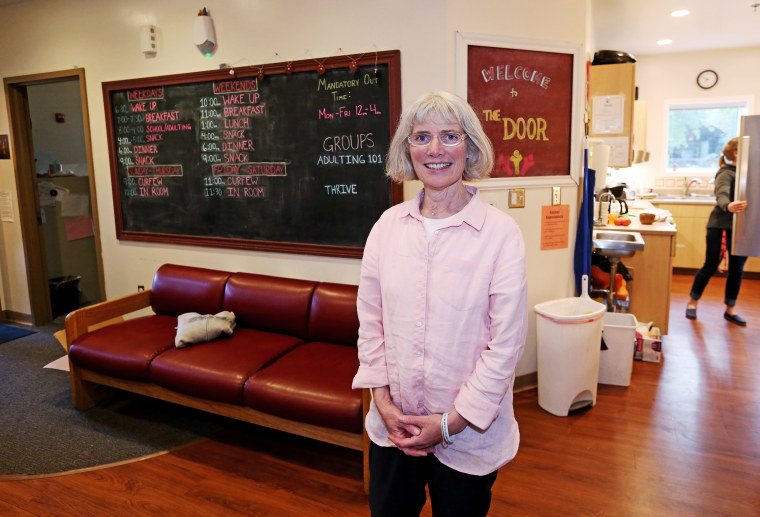
“In the winter, the youth often just hunker down and put up with what's going on,” Bates said.
Before she opened the shelter, Interior Alaska went about 10 years with no place to house its homeless youths. Opening the shelter, Bates says, took “a series of miracles.” Now, she says it’s a miracle every time a youth makes it to The Door, looking for a place to stay, hoping to get out of danger, the cold, or both.
When Fairbanks’ homelessness providers found out about the governor’s proposed budget cuts earlier this summer, they weren’t sure how they would go on. Ultimately, providers will lose 20 percent of their state funding — a number Bates and Gaskins said is more dire than it may seem.
Since opening The Door five years ago, Bates has received almost all the supplies and food needed for the roughly 125 youths she helps each year from donations.
“I’m not sure how much more the community can dig in their pockets,” she said. “We can’t cut bread and milk.”
Bates will lose about $37,000 in funding and has to reduce her staff, her main expense, by a position and a half. But requirements mandate she have a 1 to 6 staff-to-youth ratio to stay open during waking hours.
“We have two paid staff on three shifts a day, seven days a week,” Bates explained. “To lose a position and a half is significant.”
Gaskins is feeling the budget cuts too. His organization sheltered more than 900 people last year, served more than 50,000 meals, and helped house about 50 veterans. Now, he has to cut a transitional program staff member, who helps get people out of homelessness, and figure out where else they can make up for the shortfall while staying as effective as possible.
“Alaska is turning its back on the most vulnerable,” Gaskins said. “There already isn’t enough treatment in Fairbanks.”
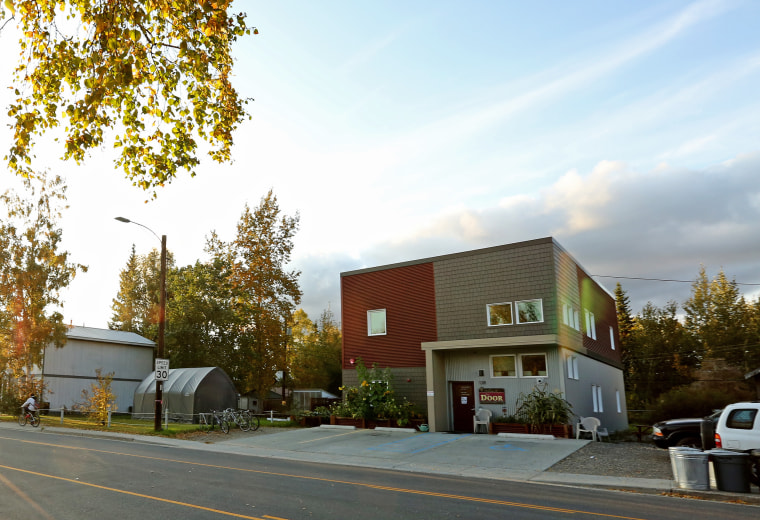
A city in emergency
In Anchorage, a similar situation is unfolding on a much larger scale.
Facing down Dunleavy’s original budget cuts in June and July, the homelessness services in Anchorage, which holds almost half of Alaska's population, had to cut back. Hundreds in shelters were told to leave and 24-hour shelters closed their doors during the day. And the governor wasn’t just proposing cutting funding to homeless services, but also free legal services to people working through eviction, Medicaid, senior benefits, mental health services and food banks.
Many of the city’s residents felt certain that with scaled back government services, more people would become homeless, Jasmine Boyle, executive director of the Anchorage Coalition to End Homelessness, said.
Anchorage saw the cuts as a public health and safety crisis and declared a civil emergency in July, liquidating funds to assist the city’s homeless population. But the funds used were those usually put toward funding homeless services during the winter when there’s a greater need. “Money for extra shelter in the winter isn’t there anymore,” Boyle said of the short-term effects.
In total, $3.6 million was cut from the Homeless Assistance Program, but the state’s Special Needs Housing Grant program stepped in and allocated $2 million to make up part of the difference. Even with that extra help, Anchorage still saw funding cut by 20 percent.
Long-term, homeless service providers are unsure what their already delicate future will look like. The Anchorage Coalition to End Homelessness said of the 1,111 people experiencing homelessness in the city earlier this year, 1,014 were sheltered and an additional 7,300 people were kept off the streets in Anchorage thanks to the city’s housing and transition services.
Lisa Aquino, who runs Catholic Social Services in the city, says those she serves come from every corner of Alaska. Anchorage is the only place in the state where certain mental health services are provided, and people seeking treatment often wind up in Brother Francis Shelter, which Aquino’s organization operates. The shelter houses many formerly incarcerated people too. “People get out of jail in Anchorage and they come straight to Brother Francis,” she said.
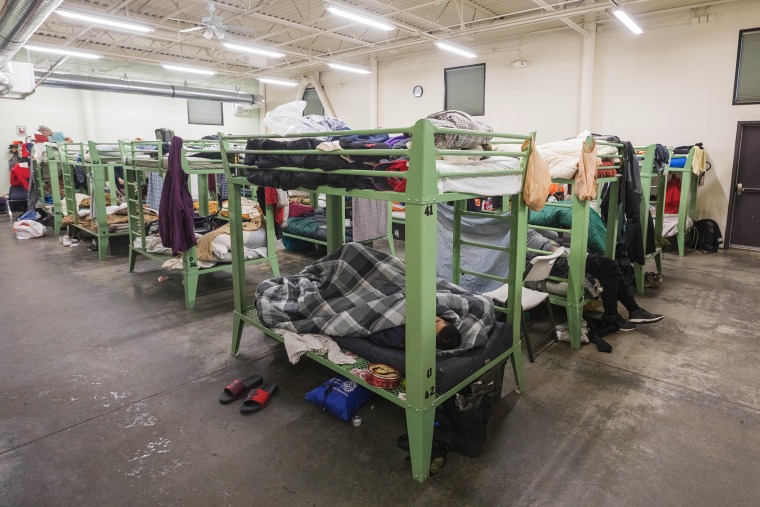
Then there are the people who want to leave Anchorage but can't — the state’s feeble road system has fewer miles than Connecticut’s. “People come up to work in a cannery and they get stuck,” Aquino explained. “They don’t have enough money to get home.”
When she learned of the original cuts, Aquino said she was “wrecked.” Brother Francis was looking at reducing its shelter population from around 240 people to 100. “We were trying to figure out who would live and die,” she said.
Taking in your neighbors, at a cost
As a public battle for adequate funding for homeless services plays out in Anchorage, an invisible housing crisis is happening outside Alaska’s cities.
“In rural Alaska, homelessness is not manifested as people on the street,” Chris Kolerok, the former president and CEO of the Bering Straits Regional Housing Authority, said. “In Arctic communities, instead of allowing your cousins to die, people will bring in other people who have no place to go.”
Kolerok says while this act of goodwill saves lives, it also has devastating effects on communities and disproportionately hurts Alaska Natives.
In the United States, about 3 percent of houses are overcrowded using the Department of Housing and Urban Development’s definition, but in parts of Alaska, rates can be as high as 50 percent.
For those living in 700-square-foot houses with 15 other people, it’s hard to sleep and harder to stay healthy.
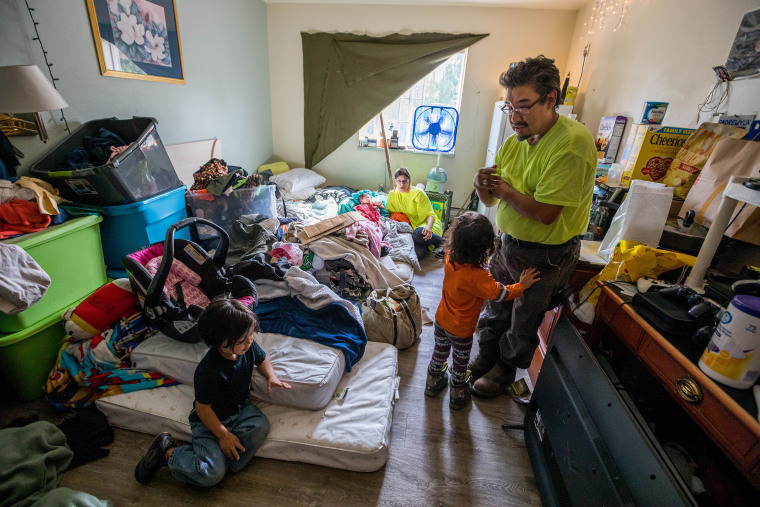
“In a severely overcrowded home, like 20 people in a house, people have to sleep in shifts because there are not enough surfaces,” Kolerok said of people living in the Bering Straits, on Alaska’s northwest coast.
Overcrowding can also create health risks like respiratory issues, Kolerok said, accounting for around two-thirds of youth hospitalizations in rural Alaska. The Association of Alaska Housing Authorities reports that overcrowding in the southwestern Calista region leads residents to contract invasive pneumococcal disease at some of the highest rates in the world.
A one-bedroom home without running water or sewage systems with four times the amount of people living inside than they are meant to is not a safe environment for anyone, the authority says. Even more, if one person in a house that shelters 20 has a substance use issue, 19 people will feel the effects.
Brian Wilson, the executive director for the Alaska Coalition on Housing and Homeless, said that overcrowding is endemic to rural Alaska.
“You see it in house after house,” Wilson said. “Overcrowding doesn’t really exist anywhere else in the U.S. to this scale.”
And while overcrowding might have a seemingly simple solution — build more homes — it’s not cheap, and the governor’s recent cuts will make it harder to solve.
“We have regions where HUD estimates there is $500 million needed to alleviate the problem,” Wilson said, and that’s just one region of rural Alaska. “It’s almost a nation-building type of investment to fix it.”
The parts of Alaska where overcrowding is the worst tend to be those that are most remote, where a gallon of milk can cost $10, and getting anything to residents is exorbitant. Often times, transporting the materials costs as much as the materials, and 2018 estimates from the Alaska Housing Finance Corporation say 16,100 units are needed to alleviate the overcrowding. Now, the governor’s cuts to Alaska’s Marine Highway System will make construction materials, groceries and basic necessities even more expensive to ship to rural areas as ferry routes become more infrequent.
The little money that was once there to help overcrowded homes — or at least maintain them — has also been diminished under the new budget. Dunleavy’s $5 million in cuts to the weatherization program that helps rural homes be retrofitted or fixed to help stay warm means the homes now won’t have needed money for repairs.
Some suggest those experiencing overcrowding should move — and some do, which homeless service providers in Fairbanks and Anchorage can attest to — but Wilson says it’s not that simple.
“We are talking about cultures and people who have lived in these areas successfully for centuries, who are tied to fishing and land, and who speak languages that are only spoken in these regions,” Wilson said of the Alaska Native communities suffering from overcrowding. “When you take an approach of ‘it’s a lot easier to move people to an urban center,’ we are talking about culture killing.”
Even if people do move, Alaska’s cities aren’t necessarily ready to absorb the impact.
More cuts to come
Dunleavy maintains his stance that the cuts are necessary. “Our current fiscal outlook — a $1.6 billion deficit and falling state revenues — also requires us to prioritize every area of spending and review projects with an additional level of scrutiny that hasn’t always occurred in the past,” his office wrote in a statement to NBC News. “Mind you, the State of Alaska has exhausted more than $14 billion in savings over the last four years.”
The governor has vowed to make more cuts. Recently, the Anchorage Daily News reported that internal memos show him telling state agencies to prepare for another round of massive cuts next summer.
Aquino knows what’s ahead. “I expect we will be in the same situation on July 1, 2020” she said. “This was his platform, so that’s my expectation.”
The only difference between this year and the next is that Aquino and her colleagues will have time to prepare. “What we have to do now is to think of how we are going to reduce services in a humane way,” she said.
For Lamprey, of Fairbanks, the cuts don’t appear logical. He thinks a lack of proper investment in homelessness services and housing will only further hurt the state.
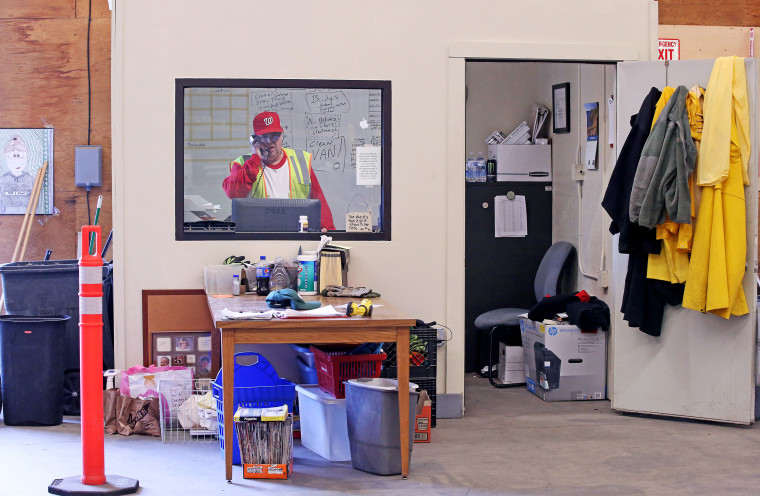
“They always cut money for the homeless,” he said. “But it costs more to put someone in jail than to rehabilitate them.”
